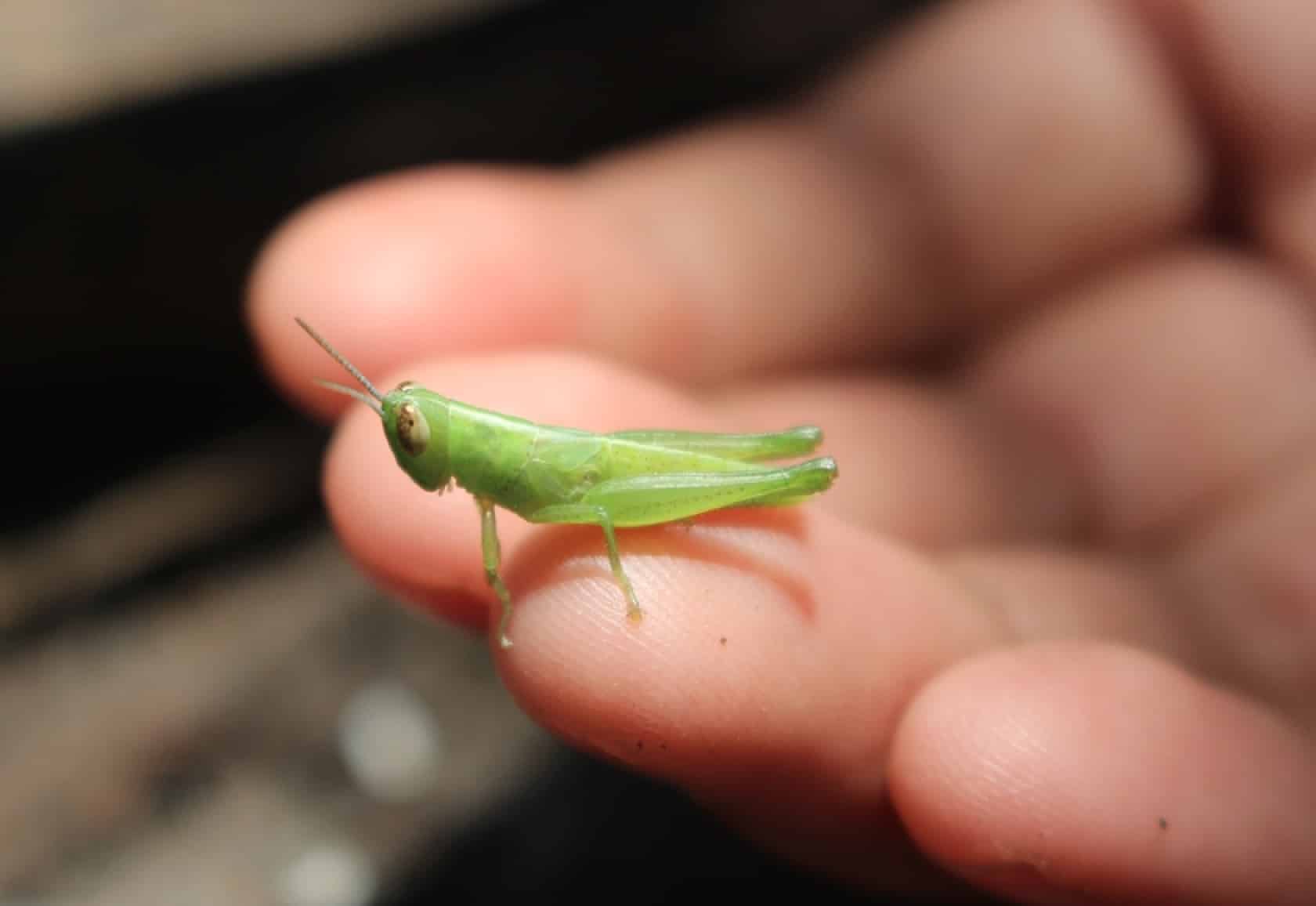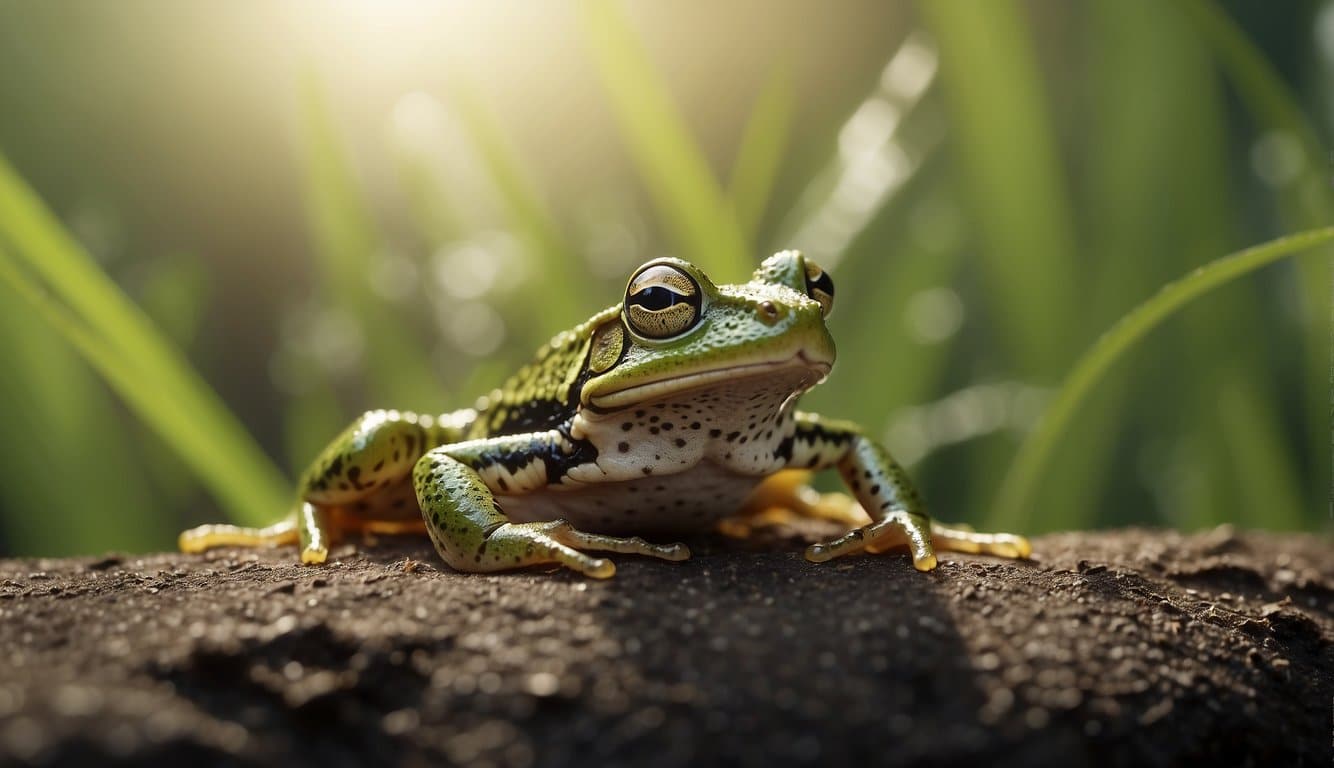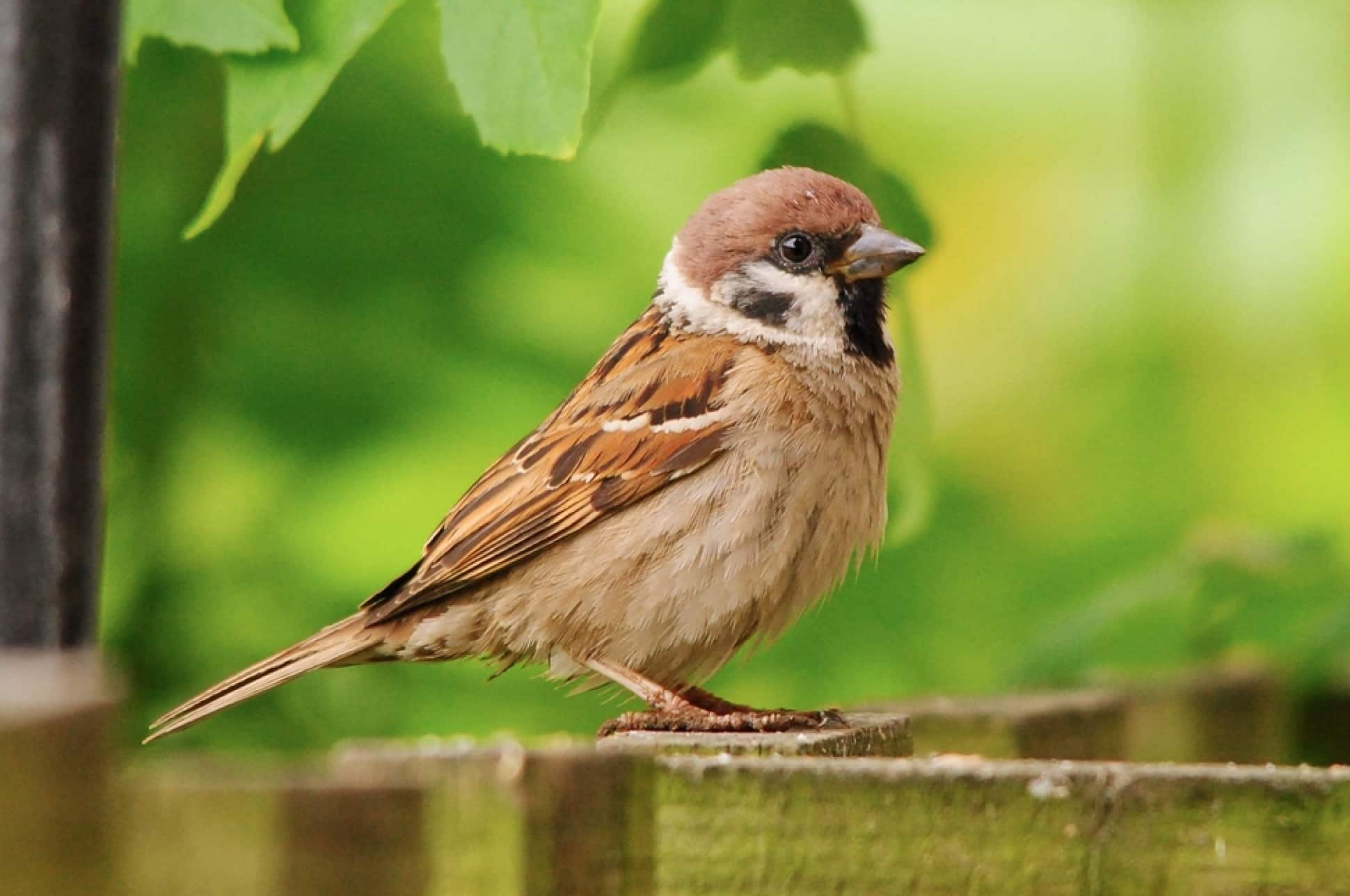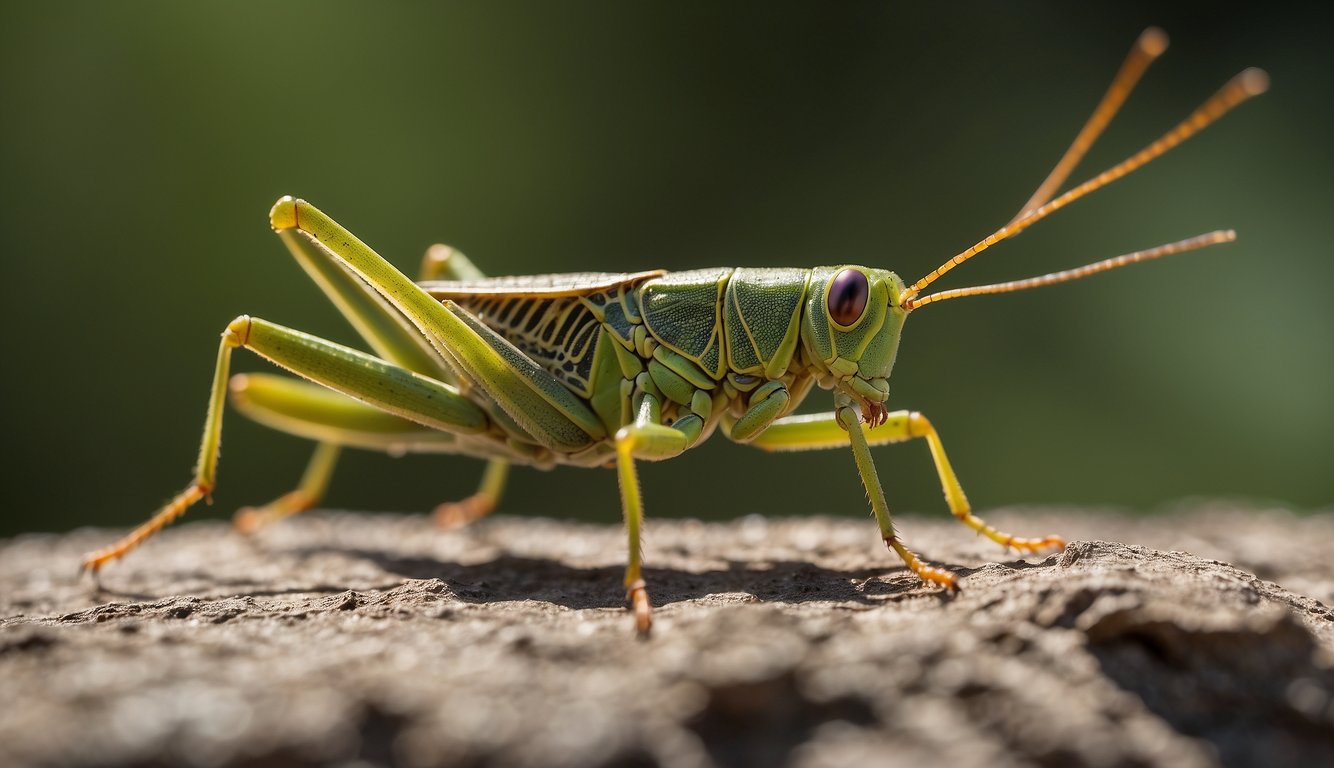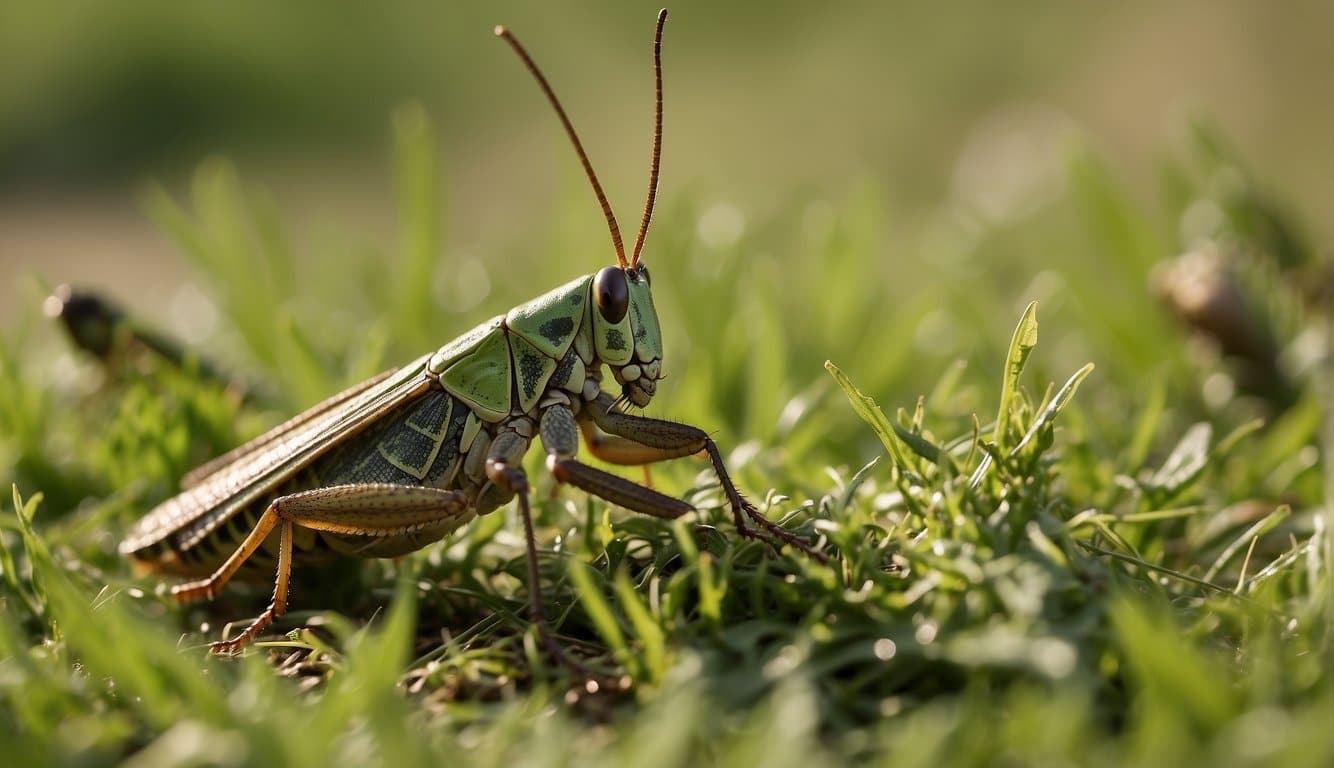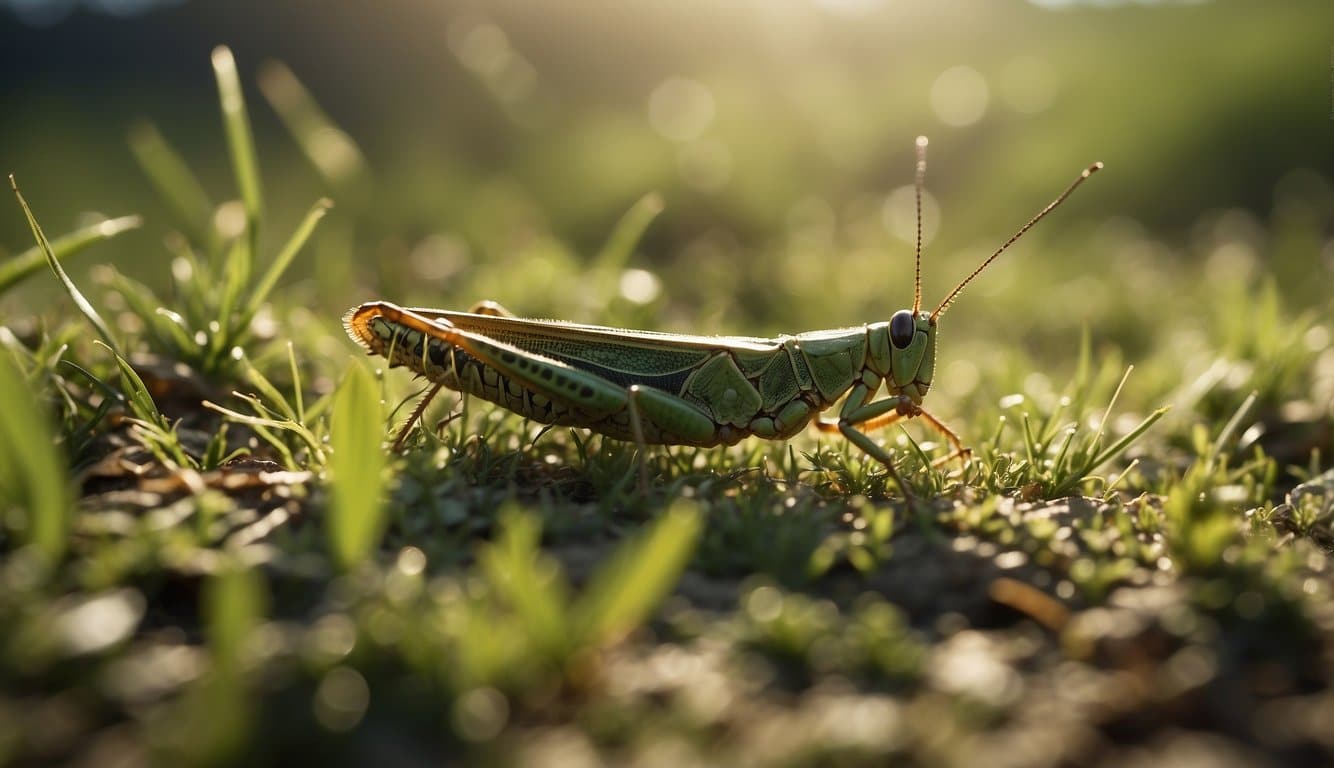| Question | What Eats Grasshoppers? |
|---|---|
| Answer | A wide range of predators, including birds, reptiles, amphibians, insects, and mammals. |
| More Info |
|
Many predators eat grasshoppers, making them a crucial part of the food web. Birds, such as crows, bluebirds, and sparrows, are common predators. Reptiles and amphibians, including snakes, lizards, and frogs, also consume them.
Additionally, various insects like spiders, beetles, and praying mantises prey on grasshoppers. Mammals, including rodents, bats, and even some larger animals like foxes, find grasshoppers to be a valuable protein source. This wide range of predators helps control grasshopper populations and maintain ecological balance.
The Most Common Predators of Grasshoppers
Grasshoppers serve as a substantial food source for a diverse array of predators. These insects fall prey to various animals across multiple classes of the animal kingdom.
Mammalian and Avian Predators:
Mammals such as raccoons, red foxes, opossums, and hedgehogs include grasshoppers in their diets.
Rodents, notably the grasshopper mouse, are known for actively hunting these insects.
Birds exhibit a significant role in controlling grasshopper populations. Species like hawks, jays, and blackbirds will consume grasshoppers when available. The wild turkey and other ground-dwelling birds also search out these insects as part of their natural diet.
Reptilian and Amphibian Predators:
The reptile group that targets grasshoppers includes various snakes that cunningly ambush their prey.
On the amphibian side, frogs and toads are also opportunistic eaters of grasshoppers, typically swallowing their prey whole.
Invertebrate Predators:
Insects themselves can be predators of grasshoppers. The praying mantis is a well-known predator, capturing grasshoppers with precision.
Additionally, wasps, beetles, and spiders such as the rabid wolf spider may hunt and consume these insects.
Some predators, like garden centipedes and crickets, feed on grasshoppers opportunistically, including those that are deceased.
Impact on Ecosystems
Grasshoppers play a pivotal role in ecosystems affecting both agriculture and natural ecological balance. They are at once a crucial link in the food web and influential in the health of habitats.
Agricultural Significance
In agricultural systems, grasshoppers are often seen as pests due to their capacity to consume large quantities of crops. They can decimate fields of grains and vegetables, which can lead to economic consequences for farmers.
On the positive side, some birds and other animals control grasshopper populations by preying on them, providing natural pest control. This reduces the need for chemical pesticides, which can harm the environment and non-target species.
- Predators of Grasshoppers Beneficial to Agriculture:
- Birds (e.g., cuckoos)
- Small mammals
- Other insects (e.g., spiders)
Natural Balance
In natural ecosystems, grasshoppers contribute to the food web and play a role in nutrient cycling. As they feed on plant material, they process and redistribute nutrients back into the soil, aiding in primary production.
Moreover, they serve as an important food source for a variety of animals, maintaining the delicate balance of predator-prey relationships.
- Ecosystem Roles:
- Nutrient recycling: Facilitate decomposition and enrich soil
- Prey: Source of nutrients for predators, supporting biodiversity
Grasshopper Defense Mechanisms
Grasshoppers, as prey to numerous predators, have developed a variety of defense strategies to enhance their survival chances in the wild. These mechanisms are vital for their existence across different habitats around the globe.
Physical Defenses:
- Jumping and Flying: Grasshoppers are renowned for their remarkable jumping ability. They can leap significant distances to escape predators.
- Camouflage: Many grasshoppers possess colors and patterns that closely mimic their environment, which assists in evading detection.
Chemical Defenses:
- Repellent Secretions: When threatened, some grasshoppers can emit foul-tasting or toxic chemical substances to deter would-be attackers.
Behavioral Adaptations:
- Startle Displays: Certain species may execute sudden movements or spread their wings to reveal eye-like patterns, startling predators.
| Defense Strategy | Function |
|---|---|
| Jumping/Flying | Escape |
| Camouflage | Hide |
| Chemicals | Repel |
| Startle Displays | Intimidate |
Bearing powerful hind legs, grasshoppers employ quick escape maneuvers, with some species adapting winged flight for added evasion capabilities.
Camouflage is another cornerstone of grasshopper defense; species such as the Brazilian Cylindrotettix alter body color seasonally to blend with the changing landscape.
Encounters with predators may lead grasshoppers to deploy chemical defenses. These noxious secretions are intended to make them less palatable or even toxic, thus dissuading predation.
When cornered, these insects leverage behavioral tactics like startling displays to create a window of escape opportunity. Such acts are often coupled with other defenses, forming an integrated survival strategy amidst the dangers they face in their natural habitats.
Human Utilization of Grasshoppers
Humans have incorporated grasshoppers into their diets and cultural practices for centuries. These insects serve as a significant source of protein in many parts of the world, and their role in cultural traditions highlights the diverse ways in which human societies utilize the natural environment.
Cultural Practices
In various cultures, grasshoppers are participants in traditional rituals and stories. They are often emblematic of traits like fertility and abundance. Some societies may use grasshoppers in art or symbolism.
For example, Native American tribes are known to feature grasshoppers in their folklore, sometimes as characters that teach important life lessons or as symbols associated with vitality and the earth’s bounty.
Entomophagy
Entomophagy refers to the human consumption of insects, and many communities around the globe include insects like grasshoppers in their diet.
- Nutritional Value: Grasshoppers are high in protein, contain essential amino acids, and have a low fat content. They can also be sources of vitamins and minerals such as Vitamin B12 and iron.
- Preparation Methods: Depending on the region, people may consume grasshoppers raw, roasted, fried, or sun-dried. Some of the most common preparation methods include:
- Toasting: Often done over an open flame until crunchy.
- Frying: Can be fried whole or ground into a meal.
- Spicing: Grasshoppers are frequently seasoned with chili, lime, or other regional spices to add flavor.
The utilization of grasshoppers by humans is a testament to the adaptability of human diets and the importance of insects as a food source in many cultures.
Frequently Asked Questions
Understanding the various predators of grasshoppers can offer insights into the intricate food webs of different ecosystems.
What species of birds are known to consume grasshoppers?
Birds such as hawks, jays, wild turkeys, crested flycatchers, blackbirds, and bluebirds are known to feed on grasshoppers.
Which predators specifically target grasshoppers in garden ecosystems?
In garden ecosystems, beetles, mantises, and spiders frequently hunt and consume grasshoppers.
During nocturnal hours, which predators feed on grasshoppers?
Bats are primary nocturnal predators that capture and eat grasshoppers during the night.
In rainforest habitats, which animals include grasshoppers in their diet?
In rainforests, a variety of animals such as tree frogs, snakes, and tropical birds are known to prey on grasshoppers.
Can you identify common predators of grasshoppers in the North Carolina region?
In North Carolina, common grasshopper predators include birds like blackbirds and prey birds, as well as reptiles such as snakes.
What role do grasshoppers play in the food chain, and which organisms typically prey on them?
Grasshoppers serve as a significant source of protein for many organisms. These include birds, reptiles, and various insects that typically prey on them.
Last update on 2025-05-05 / Affiliate links / Images from Amazon Product Advertising API
